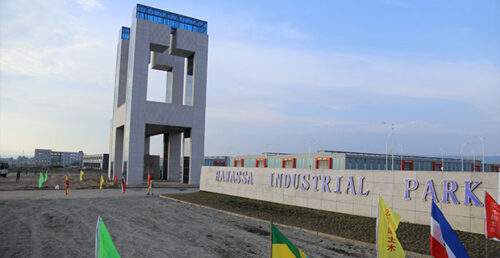Ethiopia’s Rapid Urbanization Requires Innovative Municipal Finance

By 2037, Ethiopia’s urban population will double to 42.3 million people. Job creation and innovative municipal financing mechanisms will be integral to a successful urban transition and long term economic growth for the country.
To drive the creation of new revenue streams through its industrial sector, Ethiopia has built over a dozen industrial parks in recent years. At full capacity, an industrial park can employ nearly 60,000 people. While the parks were conceived as comprehensive developments with all necessary public services, these plans have not materialized. As a result, cities near the parks have experienced increased pressure to provide services to the inflow of workers to these areas – a monumental task for any secondary city already constrained to provide necessary urban services.
Hawassa (population 250,000), for example, is a city encompassing Hawassa Industrial Park. At capacity, the Park could mean a 24 percent increase in the area population competing for access to core services. Hawassa Industrial Park managers have already expressed concerns regarding the lack of nearby affordable housing and of adequate transportation to connect industrial park laborers to the city. As a result many workers reside in the periphery of Hawassa and find it challenging to access jobs in the Park. Accommodating this influx of workers in Hawassa appears to be a daunting challenge because the city already experiences severe fiscal shortages to provide services for the existing population.
As demonstrated by the situation in Hawassa, the speed and scale of Ethiopia’s urbanization demands an innovative approach to financing urban service delivery. Typically, when a city needs to finance large capital projects, they issue bonds in the commercial market and dedicate a portion of the annual revenue to service this debt over a course of 20 years. However, the option to issue municipal bonds remains elusive to Ethiopian cities due to a) unclear rules and regulations on municipal borrowing stemming from incomplete decentralization, and b) a lack of consistent revenue at the local level resulting in Ethiopian cities’ inability to demonstrate creditworthiness and borrow from the capital market.
One option, which is to be explored through USAID programming, is educating Ethiopian cities about pooled municipal bonds, which operate by merging the revenue streams of multiple cities into one bond. Municipal bonds mitigate risks for investors; if one city defaults on a payment, other cities can help finance the gap. This aggregation can help smaller secondary cities like Hawassa access commercial markets for infrastructure development.
Commercial market lending will be necessary for Ethiopia’s future urban development. Borrowing from the capital market enables cities to make immediate investments, rather than wait until there is sufficient capital. USAID is planning to work closely with secondary cities municipalities across the country, providing technical assistance and support to find the right financing blend and structure to support self-reliance in Ethiopia.
USAID has long recognized the importance of fiscally self-reliant cities in advancing democratic governance. In the countries where USAID is a partner, municipal finance has the potential to significantly improve commerce and expand industry through more reliable and predictable urban service delivery and infrastructure development. Read USAID/Urban’s recent blog on municipal finance.

